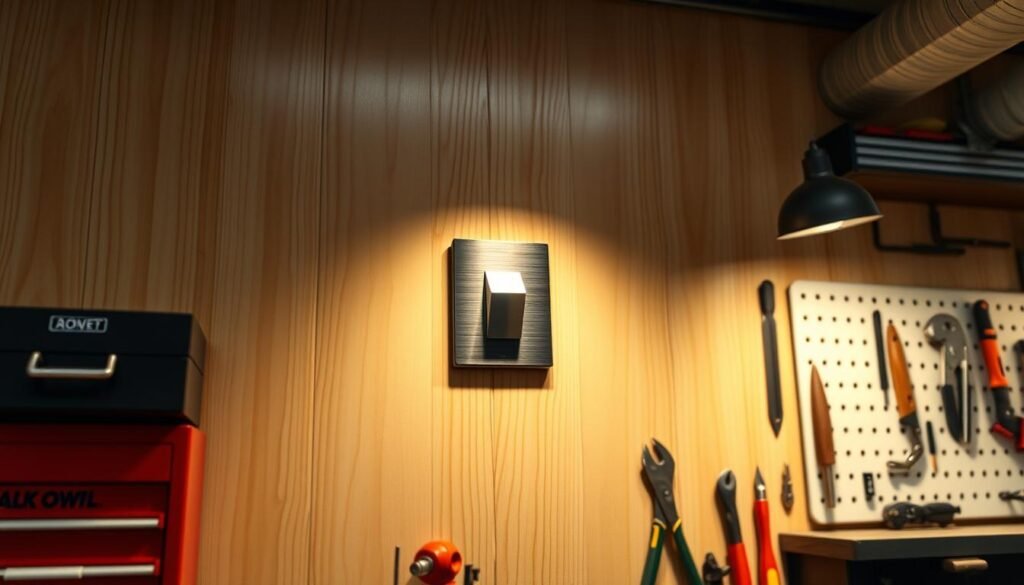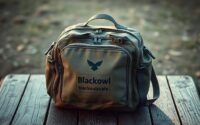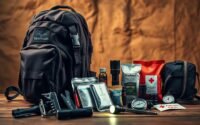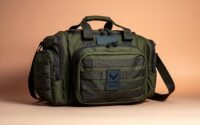Tactical Gear Buyer’s Guide: From Flashlights to Axes
Did you know that modern duty lights can produce more than 3,000 lumens and still fit in your hand? That kind of output changes how you plan your kit and how you use a light in real life.
You need gear that lasts. Rugged materials, impact resistance, and IPX water ratings matter when conditions turn harsh. This guide explains how those specs relate to the tasks you face.
Proper planning and consideration are two of the most important keys in survival prep. Take them seriously and bookmark this page; we update it often with new recommendations and tests.
Throughout this compact roadmap you’ll get plain-English definitions for lumens, beam distance, runtime, impact testing, and IP ratings. You’ll also learn when an EDC penlight is the right choice and when a full-size duty model fits your mission.
Key Takeaways
- High-output lights offer real advantages but weigh runtime and heat management.
- Published standards (ANSI/FL1) let you compare lumen and beam claims fairly.
- Match size and function to the tasks you expect; one size does not fit all.
- Durable construction and water ratings improve field life and reliability.
- Plan your kit first to save money, trim weight, and boost readiness.
Why Planning Your Tactical Gear Matters Today
A clear plan helps you match each tool to the tasks you’ll actually face. Start by thinking about the environments you operate in and the roles you fill. The best light for a soldier, officer, hiker, or homeowner changes with mission and terrain.
Take survival prep seriously: plan before you buy
Proper planning and consideration are two of the more important keys in survival prep. Define scenarios, then translate those profiles into required runtime, beam pattern, and durability. Use FL1 standards to compare options fairly.
Bookmark this continually updated guide for the latest survival insights
We continually update this blog. Bookmark it and check back often for new tests and lessons learned. Track what worked during training and swap items that fail you in the field.
- Start with scenarios: match environment and tasks to real needs.
- Prioritize specs: runtime, beam pattern, and impact resistance over headline lumens.
- Build redundancy: spare power and a backup light if failure is not an option.
- Integrate gear: holsters, mounts, and charging should be planned, not left to chance.
| Role | Primary Need | Key Spec | Typical Use |
|---|---|---|---|
| Soldier/Officer | Durability & reach | High candela, FL1-tested throw | Patrol, target ID |
| Hiker | Runtime & weight | Regulated output, long burn | Trail navigation, campsite tasks |
| Homeowner | Ease & reliability | Simple modes, rechargeable | Power outages, repairs |
Tactical Gear Buyer’s Guide: From Flashlights to Axes
Good planning means choosing lights that fit real missions, not marketing claims. Start by listing the environments you expect and the tasks you’ll perform. That simple step helps you match a light to real needs.
How this buyer’s guide helps you match gear to your mission
Modern LED duty lights are smaller, brighter, and more reliable than old D-cell models. Reputable brands publish PLATO/ANSI FL1 metrics—lumens for total light output, beam distance, runtime, and impact/water ratings—so you can compare actual performance.
- Map missions: patrol, EDC, camping, and home defense point to different flashlights and core features.
- Know trade-offs: brighter is not always safer indoors; heat and runtime matter.
- Use FL1 data: screen out hype and focus on tested light output and durability.
- Build layers: compact EDC, full-size duty, and weapon-mounted types cover most use cases without duplication.
Follow these steps and you’ll pick lights that meet your needs and prove reliable in the field.
Quick Start: Your Tactical Flashlight Shortlist by Use Case
Start with a shortlist that matches each light to a clear use case. Proper planning and consideration are two of the more important keys in survival prep. Take them seriously when you pick models for daily carry, patrol, or camp work.
EDC and pocket carry: penlights, keychain lights, compact LEDs
Choose slim penlights or keychain flashlights that fit your pocket and hand. Look for simple controls, useful low modes, and enough lumens for close tasks.
Duty and patrol: full-size lights for reach, control, and durability
Full-size models (about 8–12 inches) give longer beam distance and higher output for positive ID and scene control. Prioritize durable construction and reliable power systems.
Hands-free and area light: headlamps and lanterns for task work
Headlamps free your hands for repair or medical work. Compact lanterns offer 360-degree area illumination for tents and small rooms.
- Match batteries to your resupply plan: AA/AAA for availability, CR123A for punch, or 18650/USB for rechargeability.
- Balance power and size so you’ll carry the model when it matters.
- Consider beam profile: tight throw for distance, wide flood for area work.
Types of Tactical Lights You Can Trust in the Field
Choosing the proper light starts with where and how you will use it. Proper planning and consideration are two of the most important keys in survival prep. Take them seriously.
EDC vs. full-size duty lights: size, weight, and application
EDC lights are compact backups you carry in a pocket or bag. They trade raw lumens and distance for convenience and low weight.
Full-size duty flashlights offer higher brightness and reach. They can also serve as impact tools and stand up to heavy wear.
Specialized tools: spotlights, weapon lights, headlamps, lanterns
Spotlights deliver a tight beam for maximum distance when you must cut through smoke, dust, or long-range darkness.
Weapon-mounted lights attach to pistols, rifles, and shotguns so you can ID threats without changing your grip.
Headlamps free your hand for technical tasks and let the beam follow your line of sight. Lanterns give omnidirectional output for campsites or command posts.
- Match mission type: choose EDC convenience or full-size authority based on your most common tasks.
- Check switches: confirm switch placement fits your hand and gloves to avoid fumbles when seconds count.
- Materials matter: construction affects durability and weight for long shifts.
Understand Performance: Lumens, Beam Distance, and Runtime
A few simple metrics cut through marketing and show true light performance. Proper planning and consideration are two of the more important keys in survival prep. Take them seriously.
Light output and real-world visibility
Lumens measure total light output, but they don’t tell the whole story. Check lumen numbers, then confirm brightness with beam distance and candela for the brightest point.
Beam distance and candela: throw vs. flood
Choose throw beams when you need long-range ID and flood beams for close work. Adjustable optics can give you both without swapping lights.
Battery life and runtime strategies
FL1 runtimes report time to 10% output. Plan battery swaps or recharges before mission-critical windows. Regulated drivers hold brightness then shut off; unregulated models dim gradually and hint at remaining life.
- Treat lumens as total output, confirm with candela and distance.
- Balance high modes for search and low modes for admin tasks.
- Higher lumens mean more heat—good heat sinking matters.
- Compare only FL1-rated data for fair evaluation.
Rugged by Design: Impact Resistance and Water Resistance Ratings
Durability is more than weight—it’s how well a light resists shock and water ingress. Proper planning and consideration are two of the most important keys in survival prep. Take them seriously.
Impact resistance testing (ANSI/PLATO FL1)
The FL1 impact test drops a flashlight from just over one meter six times onto concrete. The device must show no functional failure or cracks to pass. Check the published impact resistance rating before you buy.
IPX ratings decoded: splash, submersion, and extended immersion
IPX4 resists splashes from all sides and is fine for heavy rain. IPX7 survives submersion to 1 meter for 30 minutes. IPX8 handles deeper-than-1-meter submersion for up to four hours, suitable for river or prolonged wet use.
- Verify FL1 impact resistance so your light keeps working after repeated drops on hard surfaces.
- Don’t assume high lumens equals ruggedness—check impact and ingress ratings.
- Inspect seals, gaskets, and port covers; failures often occur along the side of the body.
- For marine roles, choose IPX8 and test your carry method with a backup light.
Power Sources That Fit Your Needs and Budget
Choosing the right power source saves money and prevents unexpected downtime. Start by matching resupply options and mission length to the cells you plan to use.
Disposable options: AA/AAA and CR123A
AA and AAA cells win when you need easy resupply on the road. High-performance CR123A lithium primaries give stable output in compact lights and last longer on the shelf.
Lithium primaries can sit for about 10 years, while alkaline types age faster—plan accordingly for emergency kits.
Rechargeable choices: 18650 and built-in USB
18650 and 20700 cells cut long-term cost and support high output without constant replacement. Built-in USB charging is handy in vehicles and stations but needs access to external power.
Dual-fuel flexibility
Dual-fuel designs accept both rechargeable and primary cells so you can swap when resupply is limited. That redundancy keeps you running when missions extend beyond plan.
“Proper planning and consideration are two of the most important keys in survival prep. Take them seriously.”
- Carry spares and track your battery life with a simple rotation schedule.
- Match cell type to your power draw—higher modes demand stronger cells and cooling.
- Right-size your inventory by tracking the amount of power you consume per shift.
Controls, Modes, and Beam Types for Real-World Use
Controls determine how fast you can get the right beam on target. Choose a layout you can operate by feel. That matters when you have gloves on or are moving under stress.

Switches and interfaces
Common options include tail switches, side push buttons, and rotating bezels. A tail switch supports an overhand grip and fast on/off. Side switch designs often expose mode cycling for quick adjustments.
Rotating bezels let you change modes silently. Test each layout in your hand so you avoid fumbling during deployment.
Light levels and special modes
Most flashlights offer multiple levels of output. Fewer, well-spaced levels are faster to work with than many tiny jumps.
Use strobe for momentary control, strobe or SOS for signaling, and beacon for long-duration alerts. Confirm mode memory and shortcuts so you can reach the right level without scrolling through every option.
Beam profiles
Match beam type to your role. Flood beams illuminate rooms and vehicles. Spot beams give reach outdoors. Adjustable beams combine both and reduce the need to swap lights.
- Choose controls you can index by feel.
- Reserve strobe for deterrence and SOS for true emergencies.
- Ensure regulated output so brightness is predictable across modes.
Proper planning and consideration are two of the most important keys in survival prep. Take them seriously.
Materials and Build Quality: Aluminum, Titanium, and More
Material choice determines how well a light handles heat, drops, and daily wear.
Proper planning and consideration are two of the more important keys in survival prep. Take them seriously.
Hardcoat anodized aluminum (6061-T6): durability and heat dissipation
6061-T6 aluminum with hardcoat anodizing is common because it balances strength, corrosion resistance, and thermal conductivity.
That alloy helps move heat away from high-output LEDs and protects the finish during repeated use.
Polymer, stainless steel, and titanium: trade-offs in weight and strength
Polymer saves weight and cost for everyday carry models where extreme impact resistance is not essential.
Stainless steel resists wear in high-contact areas but adds heft. Titanium gives excellent strength-to-weight at a premium.
Bevels, clips, switches, and thermal design
Look for tight machining, sealed threads, and quality clips that hold up to vigorous movement.
Evaluate bezel shapes for anti-roll and indexing, and confirm the switch feel matches your grip and glove use.
- Favor 6061-T6 aluminum for strength and heat management.
- Consider polymer for lighter carry and titanium where weight and strength both matter.
- Prioritize internal drivers, thermal paths, and battery protections to preserve battery life and prevent failure under sustained output.
Budget, Fit, and Performance: Choosing the Right Tool
Think of cost as total ownership: the price of the light is only the start. Quality models cost more because of better materials, drivers, and FL1 testing. Factor in spares, chargers, and a holster when you set your budget.
Setting a realistic budget for years of performance
Set a budget that covers the light, spare batteries, charging gear, and a mount for daily carry. Alkaline cells have about a two-year shelf life; lithium primaries can reach roughly ten years.
Size-in-hand, carry method, and environment considerations
Test the size in your hand and with gloves. Confirm switch reach and how the light rides in pockets or on kit.
- Match performance levels to your environments—indoor tasks often need moderate, wide beams.
- Plan ownership costs for cells, replacements, and maintenance over years of service.
- Choose battery formats that fit resupply options so downtime is rare.
- Train with your setup so activation and mode changes are automatic.
Proper planning and consideration are two of the more important keys in survival prep. Take them seriously.
Beyond Flashlights: Rounding Out Your Tactical Kit
An effective kit pairs focused point sources with broad area illumination and hands-free options. Think in terms of roles: hands-on work, shared spaces, and weapon-mounted identification. That helps you pick the right type and size for each task.
When to add headlamps, lanterns, and weapon lights
Headlamps give you steady, hands-free light that follows your line of sight. Add one when technical tasks demand both hands and a focused beam.
Lanterns fill tents, command posts, or work areas with even illumination. Carry a compact lantern for team tasks and admin work.
Weapon lights integrate with firearms for fast threat identification in low light. Use them where quick, controlled point illumination improves safety.
From flashlights to axes: material, ergonomics, and mission fit
Proper planning and consideration are two of the more important keys in survival prep. Take them seriously.
- Evaluate materials and ergonomics of axes and knives so you can use them safely with gloves.
- Align beam profiles and outputs across tools so transitions feel natural.
- Choose sizes that fit your pack or belt without blocking access to essentials you need at hand.
- Consider water exposure, mounting options, and power source compatibility across the entire kit.
- Keep spares and small others like filters or diffusers to adapt your light to specialized roles.
Conclusion
A smart end-of-line checklist helps you keep lights reliable and ready when you need them most.
Proper planning and consideration are two of the more important keys in survival prep. Take them seriously. Use FL1 metrics—lumens, beam distance to 0.25 lux, runtime to 10%, and impact/water ratings—to compare output and performance objectively.
Choose with intent: match beam type and brightness to your real needs. Power your plan with the right batteries, spares, and a charging strategy to preserve battery life. Favor lights that publish tested data and show clear resistance to shock and water.
Review your kit each year and refine sizes, ergonomics, and the amount of backup power you carry. Bookmark this guide; we update it often so your gear stays mission-ready for years.
FAQ
How do I choose the right flashlight brightness for my use?
Match lumen output to the task. For close-up tasks and everyday carry, 100–300 lumens is usually enough. For search, outdoor work, or long throw, look for 1,000+ lumens and a high candela rating. Also consider beam type—flood for area work, spot for distance.
What battery type should I buy: disposable or rechargeable?
Choose based on cost, availability, and runtime needs. Disposable AA/AAA and CR123A cells give reliable shelf life and easy replacement. Rechargeable 18650 or built-in USB batteries save money long term and offer higher capacity. Dual-fuel lights give the most flexibility.
How important is water resistance and which IP rating do I need?
Water resistance protects gear in real environments. IPX4 handles splashes, IPX7 survives temporary submersion, and IPX8 supports continuous immersion at a specified depth. Pick a rating that matches your likely exposure to rain, water crossings, or submersion.
What do impact resistance ratings mean for real-world durability?
Impact or drop ratings indicate how well a light survives falls. Look for ANSI/PLATO FL1 test results showing drop height. Higher drop heights and rugged materials like hardcoat anodized aluminum (6061-T6) improve survivability when you must withstand rough handling.
How do beam distance and candela relate to lumens?
Lumens measure total light output; candela measures intensity in a specific direction and determines throw distance. A high-lumen flood light can illuminate a wide area but won’t throw far. For reach, compare candela and specified beam distance alongside lumens.
Should I prioritize size and carry method or maximum performance?
Balance matters. For everyday carry, prioritize compact size, pocket clip, and moderate output. For duty or search roles, full-size lights with higher output, better heat management, and longer runtime are appropriate. Consider how you’ll carry and access the light during use.
What switch types and modes are most useful in the field?
Tail switches offer rapid on/off and momentary-on, while side switches provide mode selection. Useful modes include low, medium, high, strobe, and SOS. Regulated output gives consistent performance; make sure mode order and lockout prevent accidental activation.
Are certain materials better for long-term reliability?
Yes. Hardcoat anodized 6061-T6 aluminum balances weight, heat dissipation, and durability. Titanium and stainless steel add strength at higher cost and weight. Polymer bodies reduce weight and cost but may trade off impact resistance. Match material to expected abuse and budget.
How do I estimate actual runtime versus manufacturer claims?
Manufacturer runtimes often cite turbo to low in ideal lab conditions. Look for regulated output figures and real-world reviews. Runtime depends on battery chemistry, output level, and temperature. Carry spare batteries or a power bank for extended missions.
What extra features are worth paying for?
Useful extras include USB-C charging, charging indicators, lockout modes, multiple beam profiles, weapon-mount compatibility, and robust clips or mounts. Prioritize features that match your intended use rather than paying for unused bells and whistles.
How should I maintain lights and other tools like axes?
Keep contacts clean, use the correct batteries, and recharge before deep discharge for rechargeable cells. Lubricate moving parts on axes, sharpen cutting edges, and inspect handles for cracks. Regular maintenance extends service life and ensures reliable performance.
What should I budget for a reliable light and complementary tools?
Expect to pay more for long-term performance. A quality EDC light often runs –0, while full-size duty lights and rechargeable models commonly cost 0–0. Add headlamps, lanterns, and a well-made axe based on mission needs and expected years of service.
How do I evaluate a light’s beam profile for specific tasks?
Test or review: flood beams are best for close tasks and area work; spot beams reach distant targets; adjustable or combo beams let you switch between both. Consider reflector shape, lens type, and user reviews showing real-world illumination patterns.
Can I trust manufacturer claims about water, impact, and lumen output?
Manufacturer specs are a baseline. Prefer products that publish ANSI/PLATO FL1 test results and clear IP ratings. Read independent reviews and field tests to confirm real-world performance under rugged conditions.
How do strobe and emergency modes help in survival situations?
Strobe can disorient threats and draw attention; SOS or beacon modes help signal rescuers. Use these modes sparingly to conserve battery and ensure you can still access steady output when needed for illumination.
Where can I find reputable brands and reliable reviews?
Look at respected manufacturers like SureFire, Streamlight, Fenix, Olight, and Pelican for lights, and Estwing or Gerber for axes. Read gear reviews from sites and forums that publish measured lumen, candela, and runtime tests for objective comparison.


